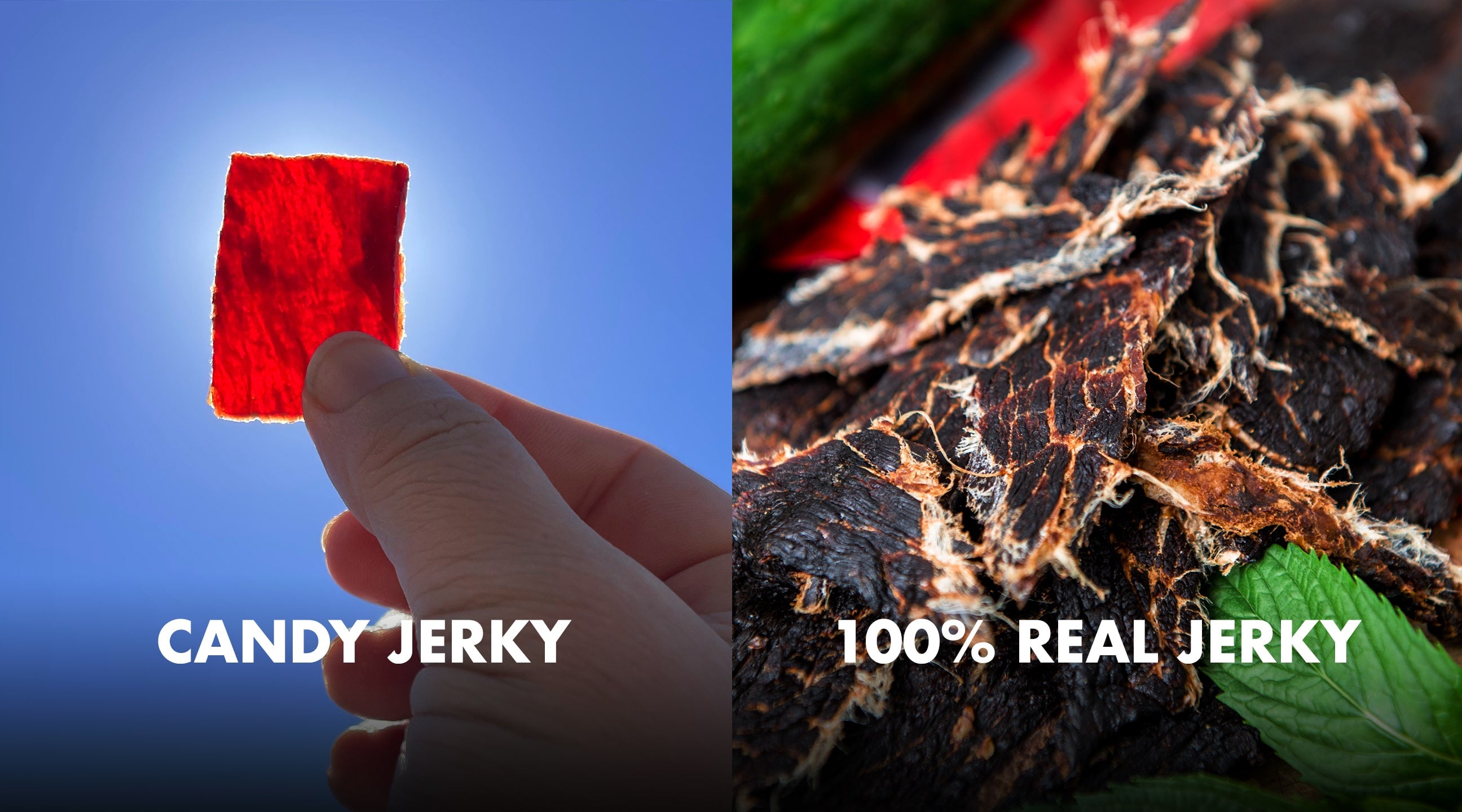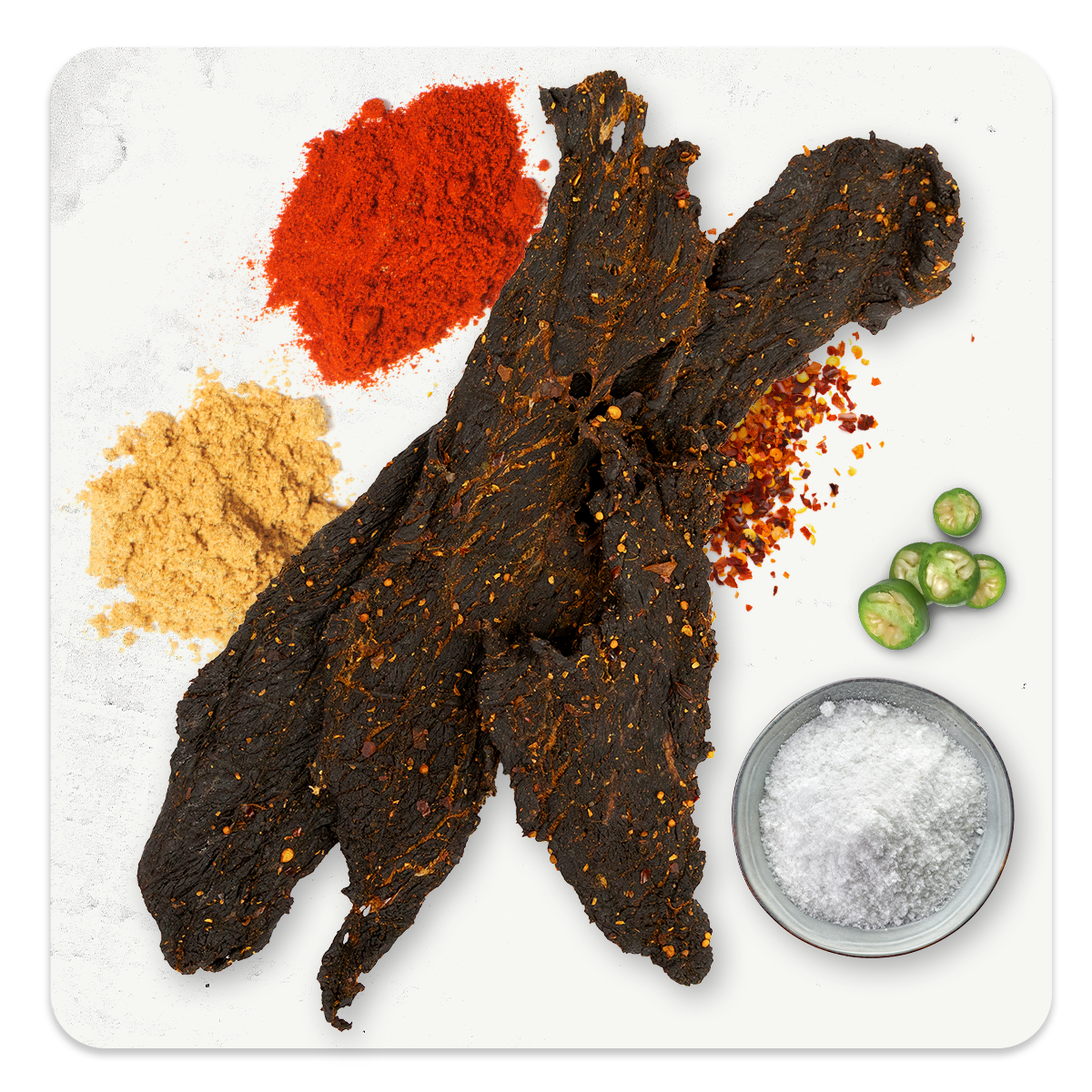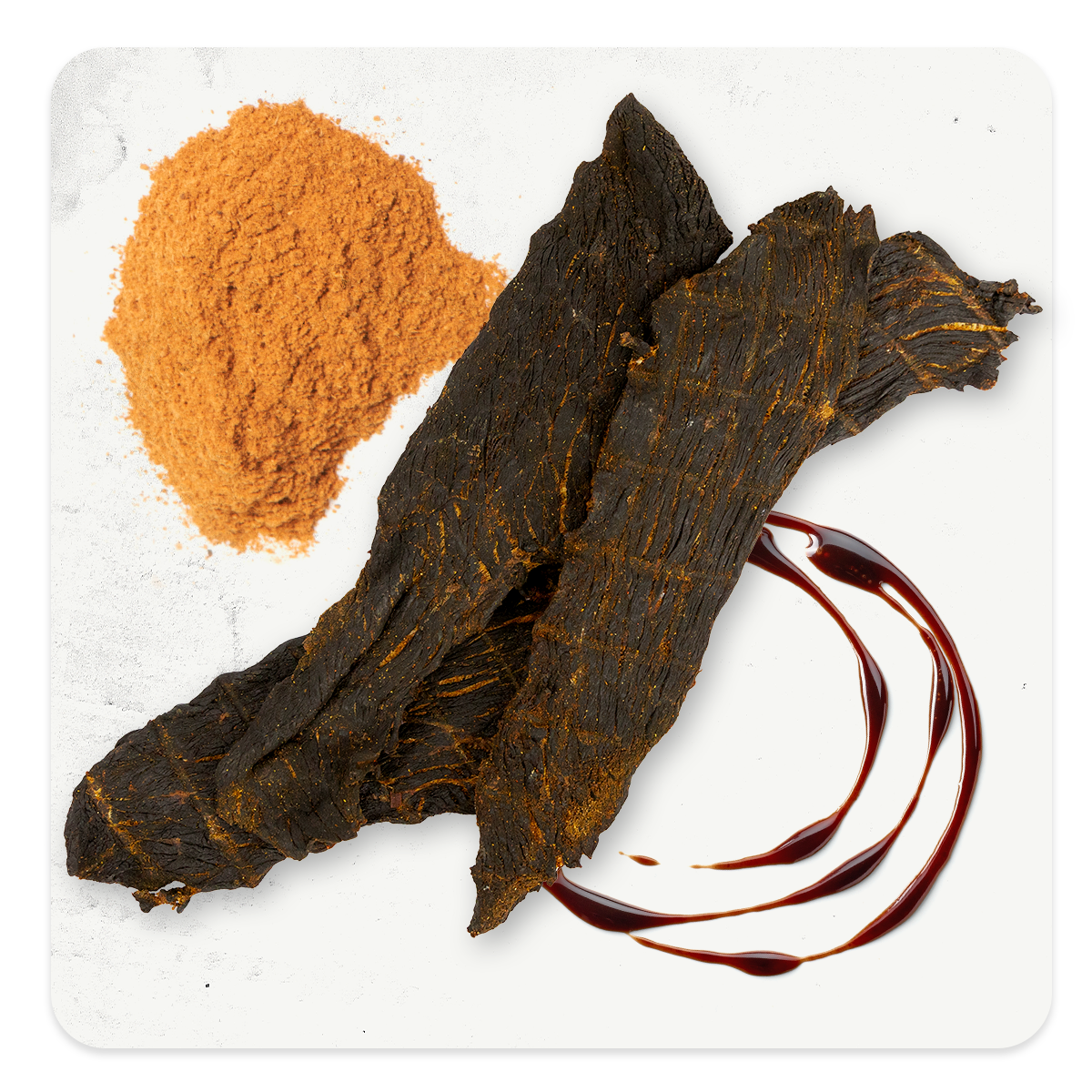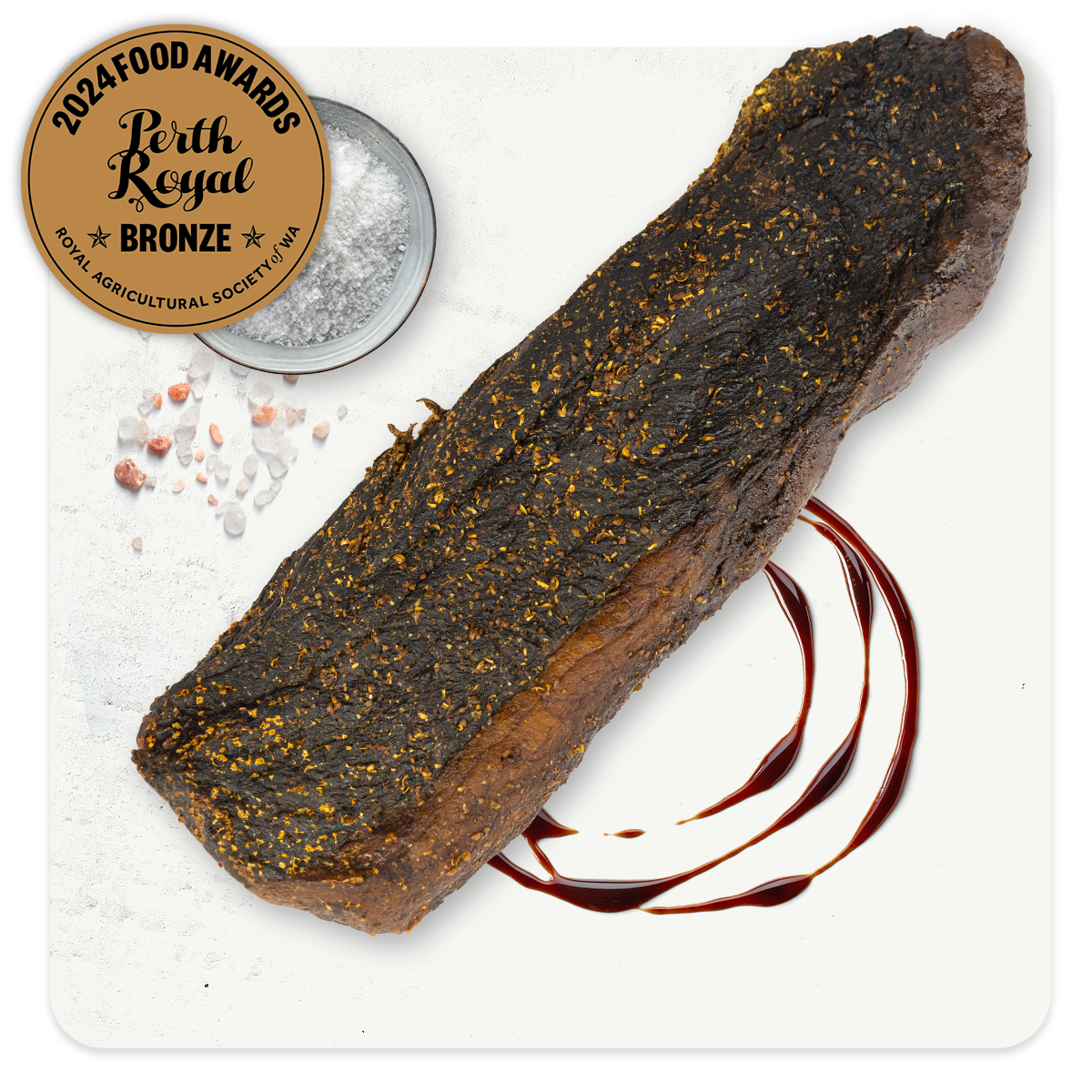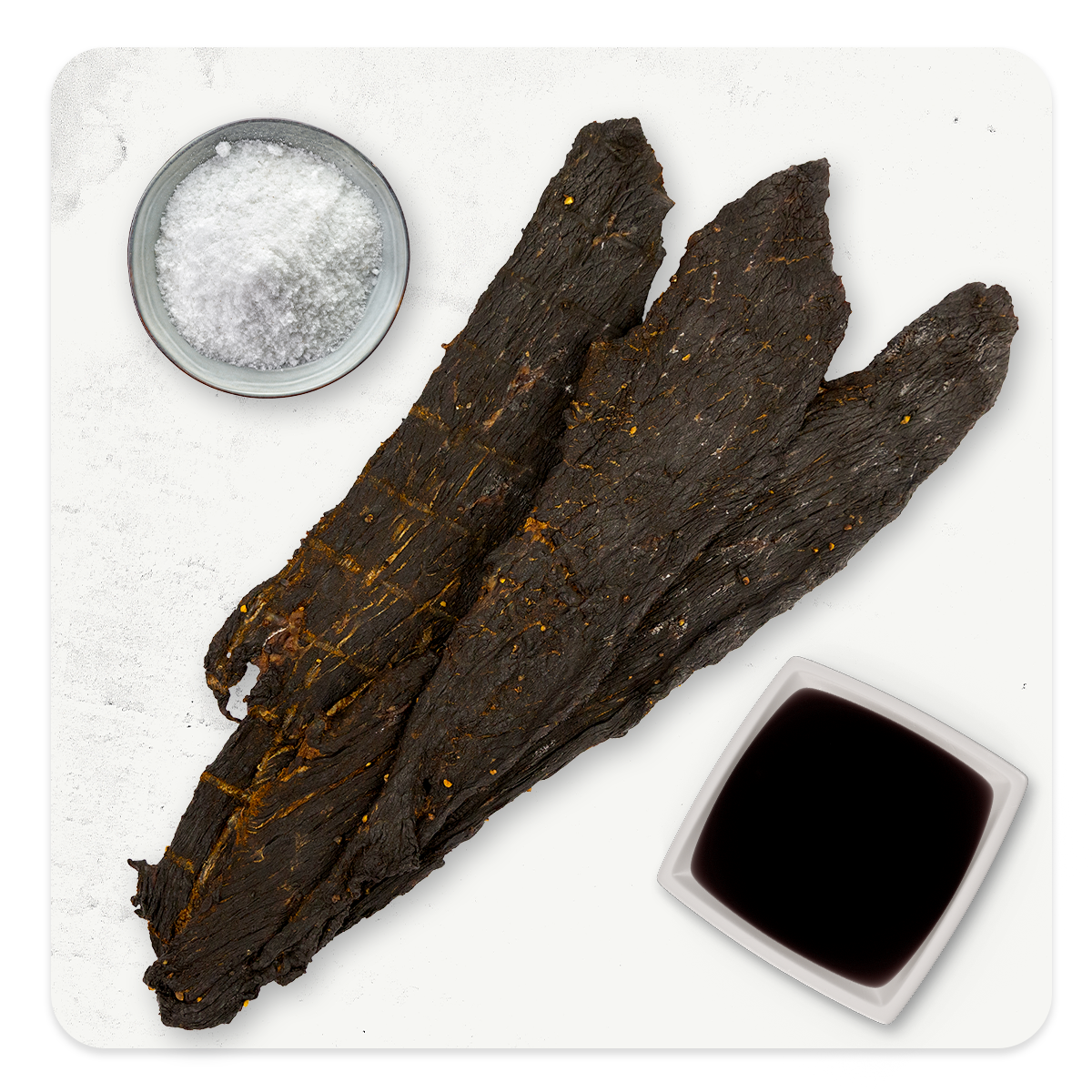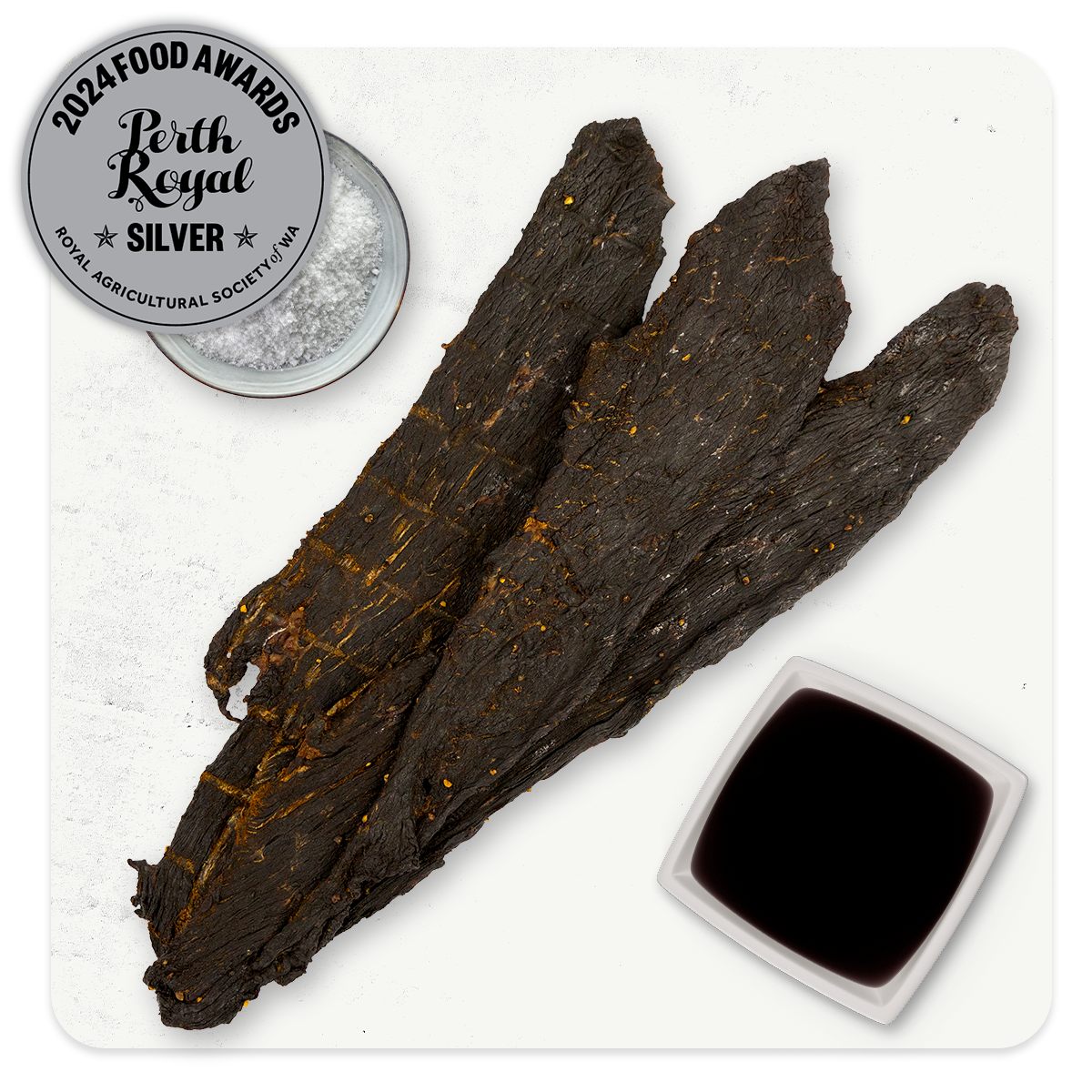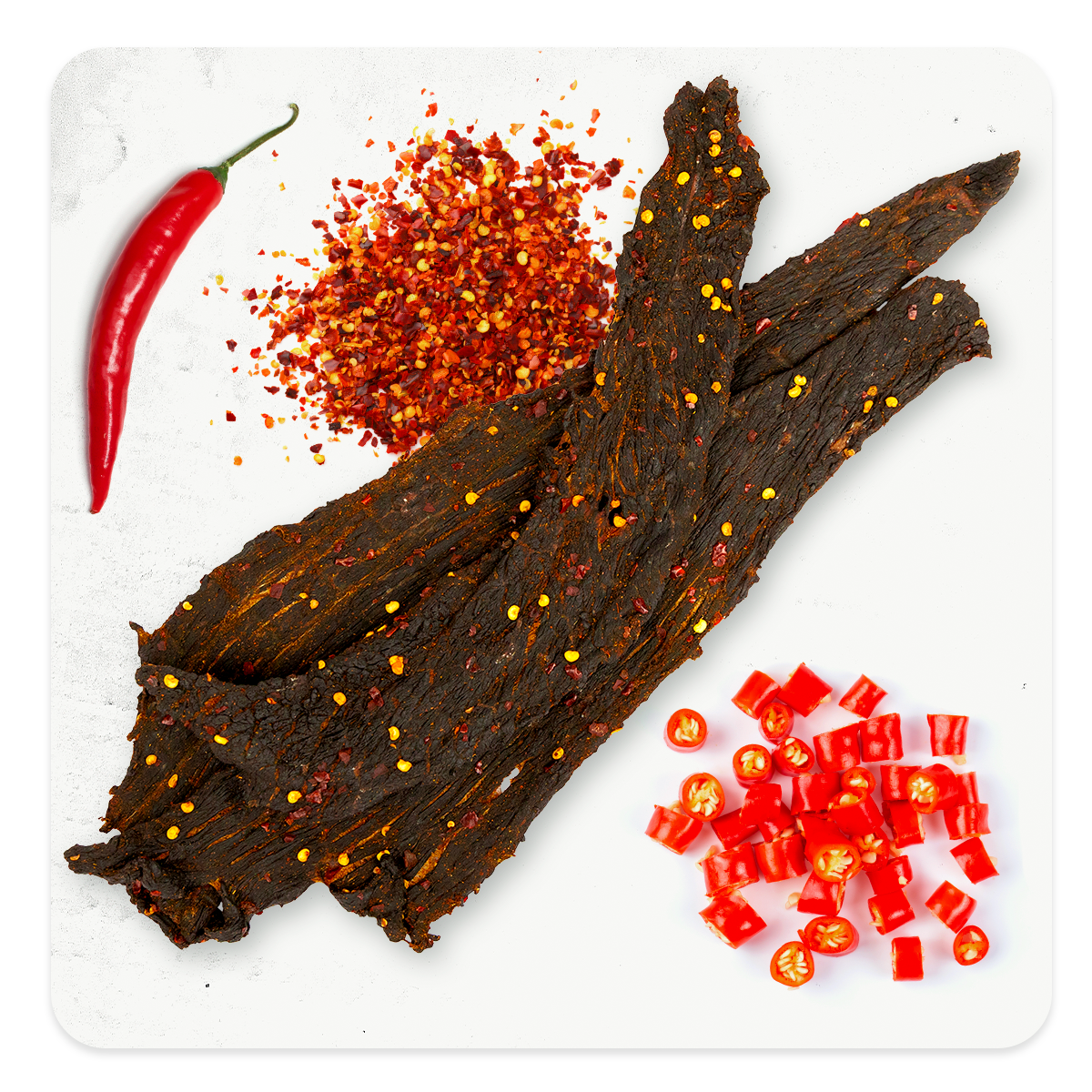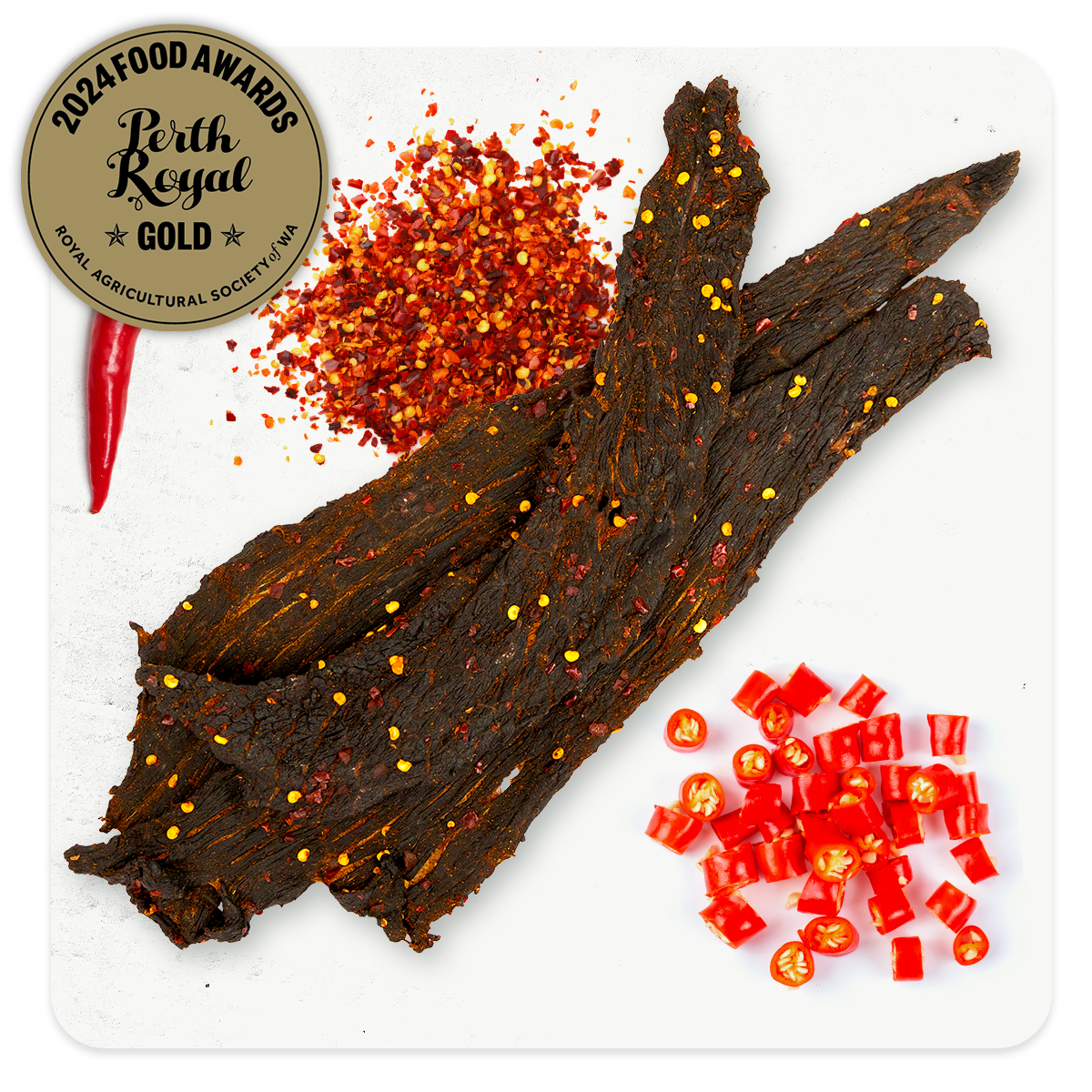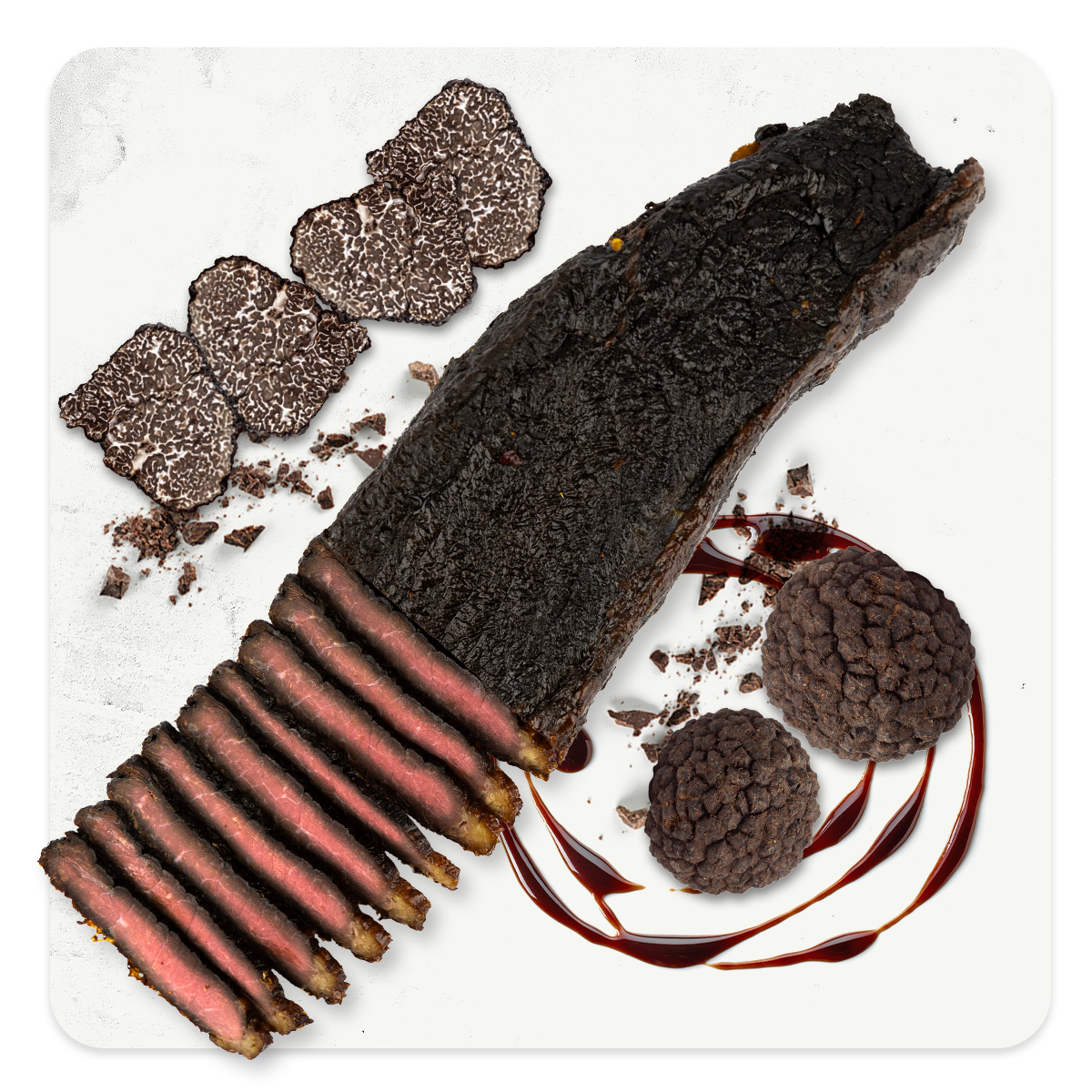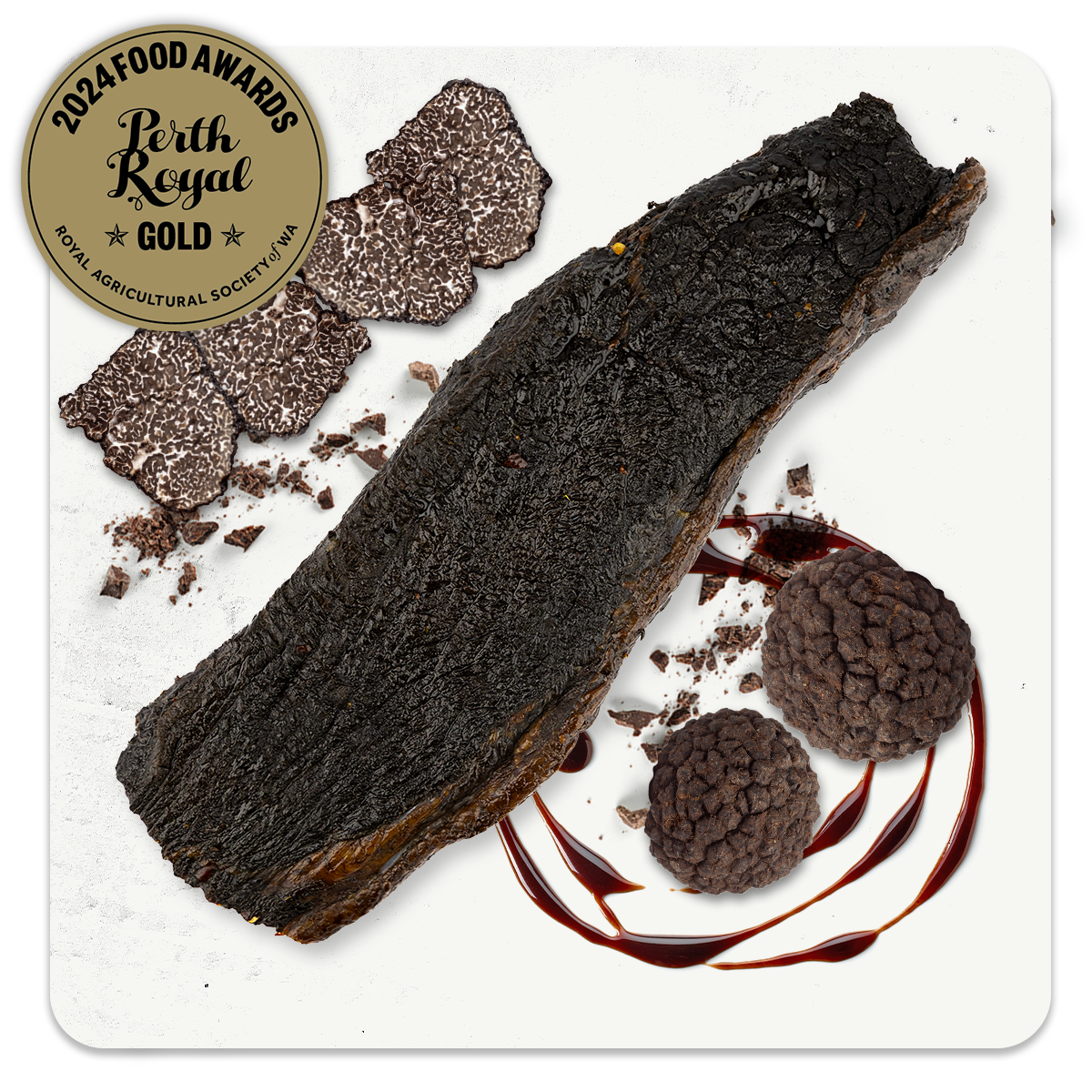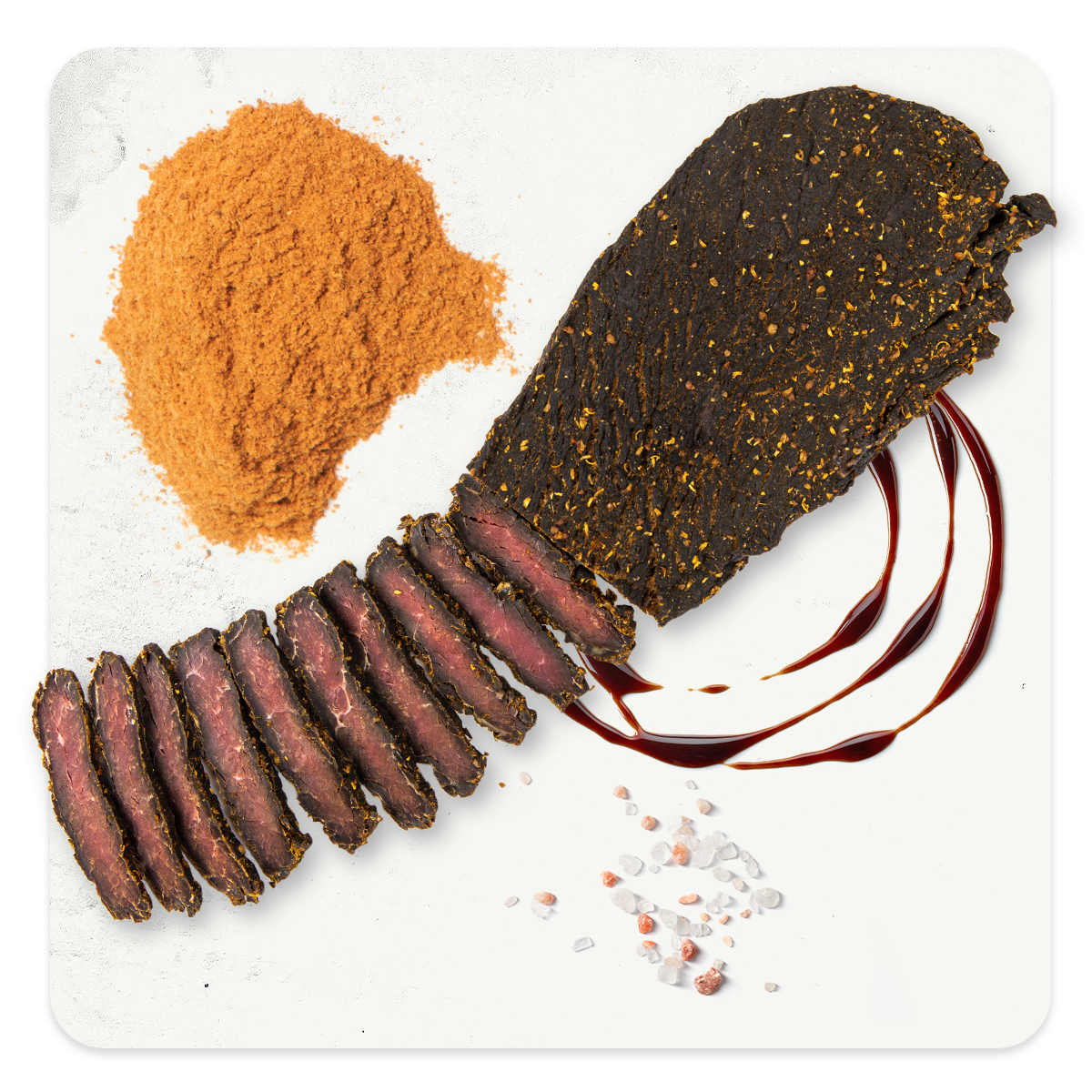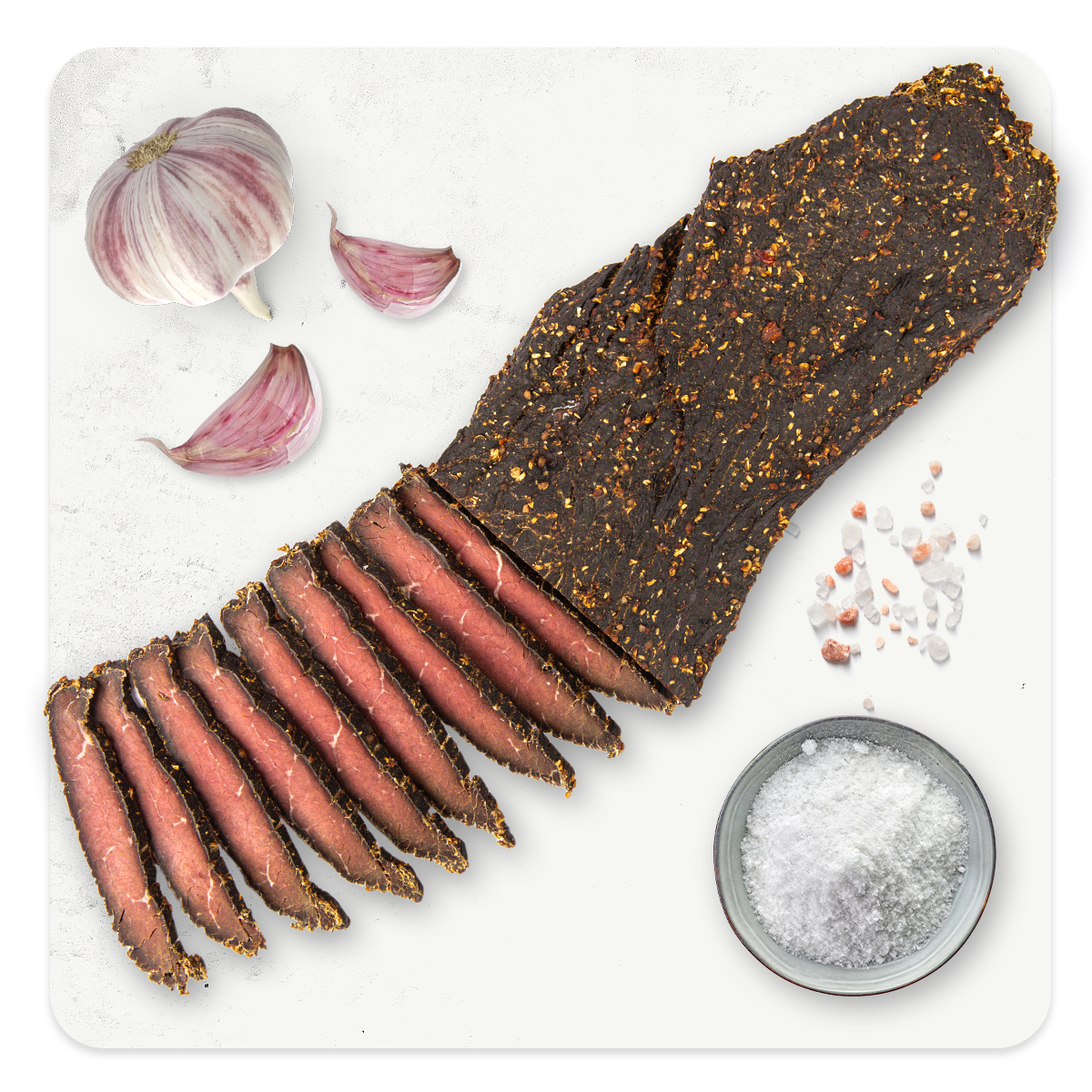Have you ever bought a packet of beef jerky and just been disappointed by what you've found inside? Well, the chances are you bought a packet of candy jerky. Unfortunately this is the most common style when it comes to store bought jerky, which dominate Australian supermarket shelves. While candy jerky and real jerky are both technically called ‘beef jerky’, that's about all they share in common. So, let us run you through some of the key differences between the real stuff and the candied stuff so you can make a more informed choice next time you've got a hankering for some quality beef jerky.
The process
Traditional jerky
Traditional jerky is made from 100% meat. It is cut into pieces or strips and left overnight to marinade in a selection of sauces, herbs and spices, according to the desired flavour. The meat is then laid out on racks which are placed in a drying oven for around six hours.
Homemade jerky
If you want to try making your own jerky at home but don't have a drying oven, simply set your standard oven to around 60 degrees celsius and lay the marinaded strips on an oven tray, or hang them on the oven racks. Prop open the oven door to ensure proper airflow and start checking on the meat in roughly four hours.
Of course, not everybody has the means or the willingness to prepare and marinade meat overnight, let alone supervise such a lengthy drying time. So, when we spend decent money on packeted jerky, we should expect quality that reflects the price.
Jerky by The Jerky Co

The higher the quality of the cut of meat, the better the results. The Jerky Co uses premium MSA grade topside Australian beef and quality ingredients to make the best beef jerky.

High quality jerky will have the desired moisture content, a good chew, and the flavours added in the marinade should complement the meat perfectly.
Candy jerky
Unlike real jerky, candy jerky is made from cheaper cuts of meat, even offcuts. It is then minced into a paste and mixed with artificial flavours and sugar. This is why candy jerky tends to be soft and textureless, and tastes only of the flavours that have been added to it rather than the meat itself. It's also why each piece looks about the same as the last—because the paste is squirted out as large uniform sheets which are then cut into pieces after dehydration. Sliced and dried meat should not look like this. Nor should it be translucent. When you hold candy jerky up to a light source you will notice it is somewhat see-through.
Meanwhile, the muscle fibres have been broken down so much in the mincing process that there is no 'grain'. While real jerky can be torn along the direction of the meat's muscle fibres, candy jerky simply pulls apart in chunks.
What this all adds up to is a less than satisfactory snacking experience made worse in the knowledge that your dried meat paste cost about as much as the real deal.
But it's not just the taste and texture that matters. Many of us choose to snack on jerky because it rates nice and low on the guilt index. With its low fat content, low carb content and high protein content, it is a popular choice for people who don't wish to feel that they need to run a few laps around the block to offset a tasty nibble. So let's take a quick look at the nutritional component of both real jerky vs candy jerky.
Nutrition
Real jerky is generally lower in fat and carbs. This can vary depending on the brand and what flavour you like most, but generally, the sugar content of real jerky is low (between 2-8g per 100g). Similarly, you are unlikely to see fat content reach 10g or more per 100g, instead it is usually just a couple of grams. The major nutritional component of real jerky is protein - which is fantastic for providing energy and building healthy muscle.
Candy jerky has a similar fat content but it's the sugar that is the real killer. Some of the sweeter jerkies can have nearly 30g of sugar per 100g. In combination with the questionable process through which the meat is produced, candy jerky is often no better than junk food.
Summary
Real jerky is superior to candy jerky in every way. They simply do not compare, and really shouldn't be considered in the same food category. Real jerky is natural, high in protein and made from slices of fresh premium quality beef. Candy jerky, however, is so processed that it barely even resembles meat. Mixed with all sorts of additives, flavours and sugar, it's probably closer to a piece of candy than it is a premium meat snack for humans.
To put it straight — candy jerky is simply a cheap alternative, and its low quality ingredients reflect this. So next time you're in the snacks aisle, just remember that the few dollars that you may save by opting for candy jerky will not be worth it. Always go for the real deal.


